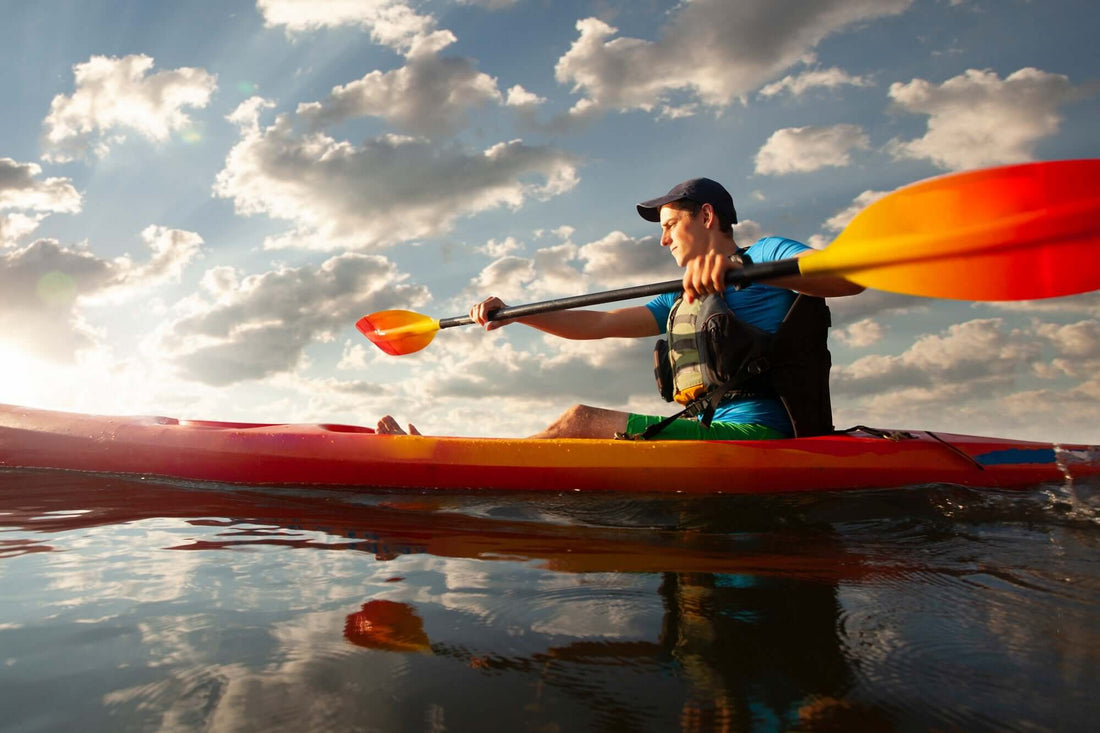As a non-mechanical vessel, you might be wondering “why would I ever need to tow my kayak”? Well, the motor might not seize, and you might not run out of gasoline, but there are a number of situations that can arise which would leave a paddler in need of some assistance. So, knowing the safest way to tow a kayak is another weapon in your safe paddling arsenal.
Why & When to Tow a Kayak
Your beautiful sunny day on the lake takes a turn as the wind picks up. Your new paddling companion quickly becomes exhausted and pulls a muscle. What do you do? It can happen - exhaustion, inexperience, and injury can lead to a situation where a paddler can’t get themselves or their kayak back to shore. A broken or lost paddle can also compromise one’s ability to self-power their kayak.
This is when a tow comes in handy. Whether they just need a little extra boost or they need to completely rely on another’s power, a paddler can benefit from assistance from a tow.
How to Tow a Kayak
There are a couple of different methods for towing a kayak / paddler. Choosing which is best depends on the situation.
Quick tow
This method is best for short tows and includes contact towing and short line towing.
Contact towing, as it sounds, means that the tow-ee (either a swimmer or kayaker) stays in contact with your kayak by grabbing a bow handle or static line while you paddle to safety. Both kayaks should be parallel, with the tow-er slightly ahead so he/she can still paddle.
Another short distance towing method is the short-line tow. In this case, kayaks are parallel and a short line is used to clip them together by the deck lines. Rather like contact towing, your flotilla will advance together without slack in the line. This might be necessary if the paddler is injured and unable to grasp the kayak for a contact tow.
STEPS:
- Approach the kayaker in need and explain what you are going to do. Make sure you are on the same page.
- Align the kayaks so they are parallel and heading in the same direction.
- Have the tow-ee grasp your kayak to keep you together while you a) begin paddling to safety or b) prepare your line for short line towing
- Attach your line from a deck line on your kayak to a deck line on the other with a carabiner
- The injured or exhausted paddler can release the kayak and rest while you paddle to safety
Inline tow
This type of tow is better for long distances and work, like the above, for both an assist and a full tow.
For an inline tow, you will need a line that attaches from the assister’s kayak to the assistee’s kayak. The towing kayak proceeds to paddle in the direction of safety while the disabled kayak/paddler travel behind. If the paddler is still able, they can assist with paddling as his/her strength allows.
A very popular option for this type of tow is a tow belt. You can make one part of your required kayak safety gear. It is like a fanny pack that you wear around your waist (and should fit below your PFD). The pouch includes line and carabiners to make towing simple. You can simply attach the loose end to the bow of the kayak in need, deploy the line, and start paddling. The other end of the line is attached to you by way of the belt. This actually keeps the line in a great position to tow, low and centered on the kayak (because it is around your middle).
STEPS
- Approach the kayak in need and ask if they need a tow. Communicate what you are going to do.
- Attach a line to the bow of the other kayak. Make sure the other end is attached to your kayak - either by way of a static line or the tow belt you are wearing.
- Deploy your line (making sure that it isn’t tangled or in danger of catching).
- Paddle to safety while keeping the tow-ee behind you. Start slowly until there is tension in the line, then you can begin to pick up some speed. If the other paddler can still help, they can paddle as well, but make sure that they aren’t in danger of overtaking your kayak. Don’t leave too much slack in the line.
While you never hope to need a tow, it is vitally important to know how to tow a kayak if you ever do. Stay safe on the water and be prepared for all these eventualities. A little bit of preparation and care can go a long way toward safety. Happy Paddling!

